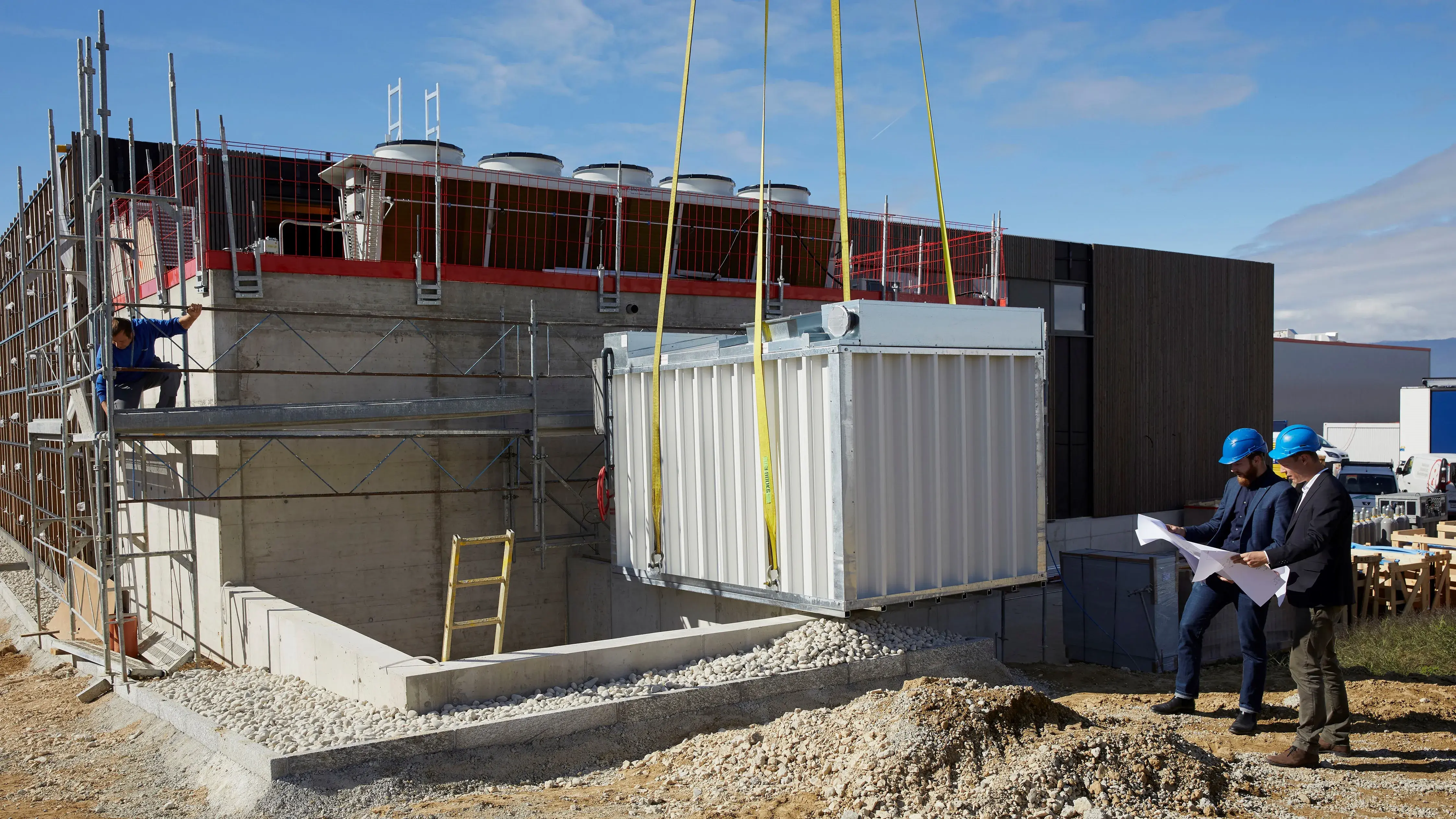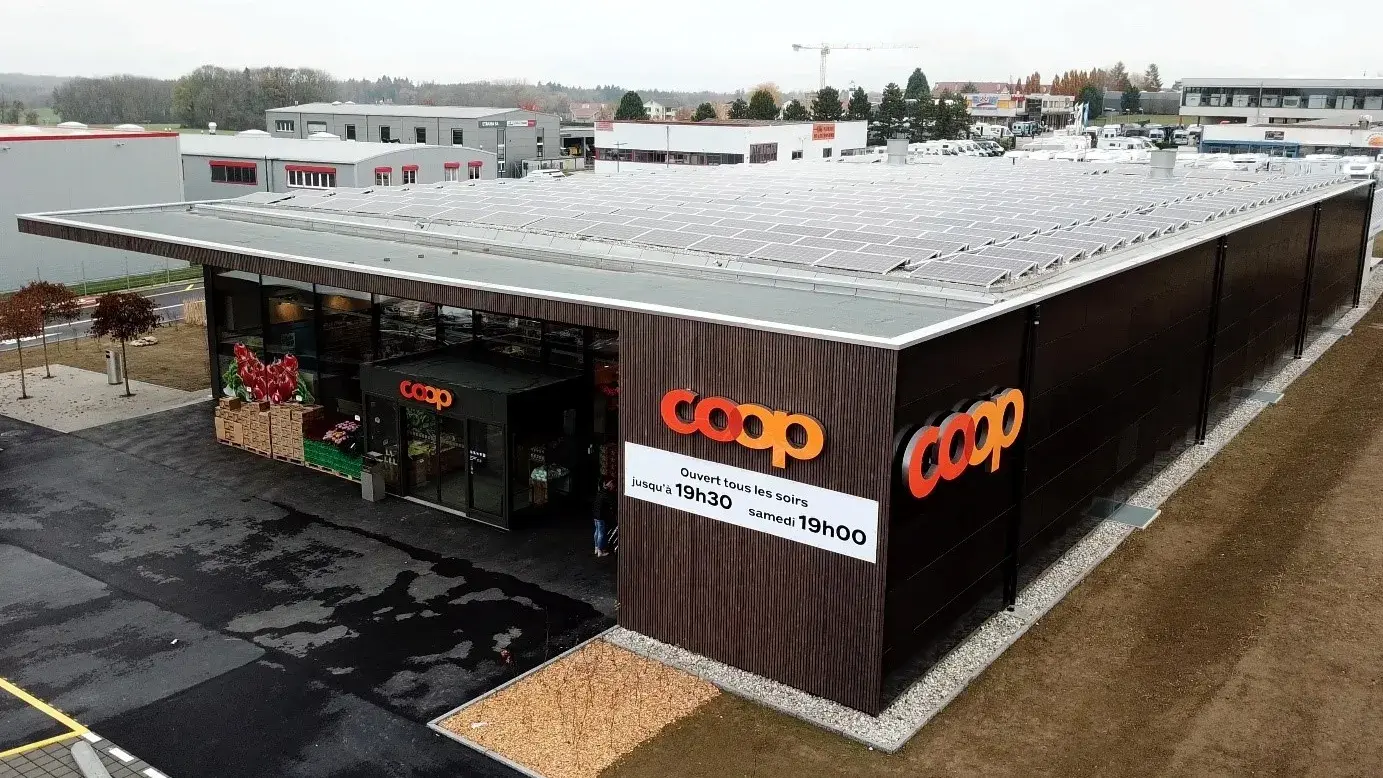Ice instead of battery: ZHAW researchers investigate ice storage system
Almost two-thirds of the energy required by supermarket branches is used to cool food. Therefore, it seems obvious that excess self-produced photovoltaic electricity could be stored in the form of ice. In a project initiated by Coop, the company Frigo-Consulting has integrated a new type of ice storage system into the refrigeration machine process for this purpose. ZHAW researchers have examined the SFOE demonstration system in operation – Silvan Steiger explains the details in an interview.

Coop has set itself the ambitious goal of being CO2-neutral in the "directly influenceable areas" by 2023. One way to achieve this goal is photovoltaics. In Etagnières in the canton of Vaud, Switzerland's largest retailer opened a branch in 2019 that is equipped with photovoltaic modules on both the roof and the facade. On sunny days, the system produces a surplus of electricity. Instead of feeding this surplus into the grid at unfavourable conditions, it is more economical to consume the electricity oneself, if possible.
For this purpose, an ice storage system was installed in the Etagnières branch. It is intended to store the surplus electricity from the roof and facade and to support the refrigeration system in its operation. In this interview, Silvan Steiger from the ZHAW Institute of Energy Systems and Fluid Engineering (IEFE) explains whether and how this works, and what part the ZHAW plays in the ice storage system project.
Silvan Steiger, you are working on a research project involving the ice storage system.
Exactly. The project was initiated by Coop. The company Frigo-Consulting took over the technical planning of the ice storage system and the entire refrigeration system and, when the branch was put into operation, carried out measurements. Then Coop brought us on board as a scientific partner in order to analyse and evaluate the data obtained.
The parties involved
At the ZHAW Institute of Energy Systems and Fluid Engineering (IEFE), the Refrigeration research group was involved in the ice storage project. The head of the institute, Frank Tillenkamp, acted as expert, Silvan Steiger as project manager, and Dorian Zeindler was responsible for evaluating the data.
The project, initiated by Coop and Frigo-Consulting was financially supported by the Swiss Federal Office of Energy SFOE.
Before we go into the data: How does the ice storage system in Etagnières work?
In classic ice storage technology, renewable energies are used to cool an ice storage system. The cold thus available is used by means of a water-glycol circuit to cool goods directly. In the case of the direct evaporative CO2 refrigeration system from Etagnières, however, the principle is different. In such a system, the refrigerant itself is transported to the cooling shelves and evaporates there – the goods are cooled without an intermediate circuit. It is not financially worthwhile, however, to build an additional circuit just for the ice storage. Coop and Frigo-Consulting have therefore developed a concept in which the ice storage system does not cool directly but supports the refrigeration system in its operation.
Couldn’t a battery do that, too?
Yes, but: an ice storage system is less environmentally polluting than a new battery. Even with so-called second-life batteries – batteries that are reused – the ice storage system can keep up thanks to its long lifetime.
Has the chosen principle proven itself in Etagnières?
The measurements and our evaluation have shown that an ice storage system can be integrated into a direct evaporative CO2 refrigeration system. However, we had to conclude that the combination of photovoltaic system and ice storage did not work as anticipated. There is one main reason for this: the ice storage system can’t store all the surplus energy from the huge PV system. This meant that it was only possible to a limited extent to increase the proportion of self-consumption of electricity from the PV system. Another problem: the ice storage system supports the refrigeration system when the sun is not shining – that is, when the refrigeration system tends to run more efficiently anyway.
Are ice storage systems a bad idea for supermarket branches after all?
No, they can definitely do the job. However, we have learned that it is better to design the systems the other way round.
What does that mean?
In the case of Etagnières, the plan was to store the energy from an existing PV system. It would be better, however, to start from the refrigeration system when planning. Depending on its cooling demand as well as the outside temperature, each refrigeration system only allows a limited amount of energy to support it. Therefore, you would first have to determine this amount in order to then correctly dimension the PV system and the ice storage system based on it. This was one of the key learnings of the project.
Will Coop stay with it?
The system in Etagnières will continue to run. If you think about it on a larger scale, another opportunity of ice storage systems becomes apparent: If Coop were to equip its approximately 1,000 branches in Switzerland with ice storage systems, it could make a significant contribution to dampening fluctuations in our electricity grid. This could be worthwhile for the retailer, not least financially.
More about the project
The official final report on the ice storage project in German can be found here. (PDF 7.46 MB)
Silvan Steiger has also written a detailed summary of the project for the magazine Friscaldo. The article in German is available for download here. (PDF 2.08 MB)

